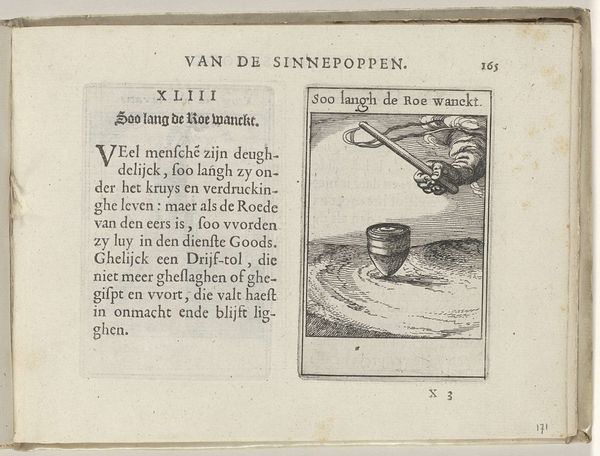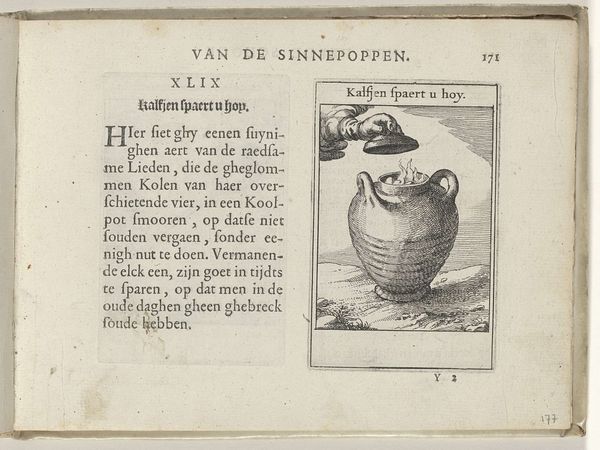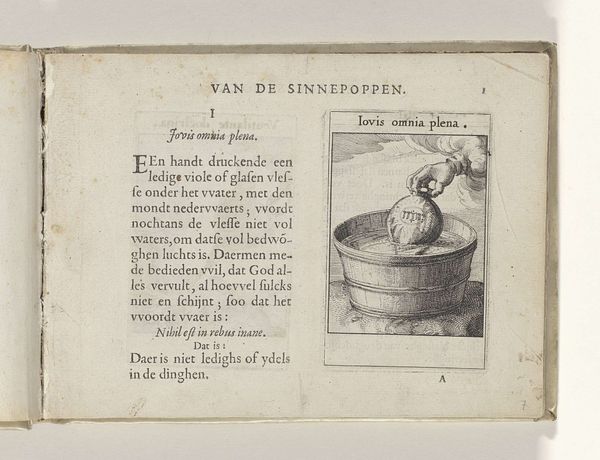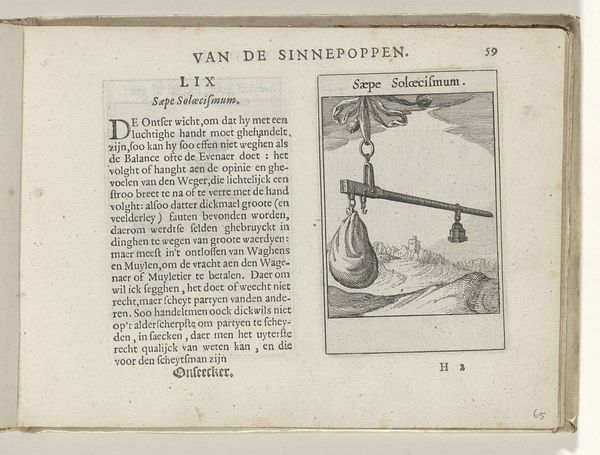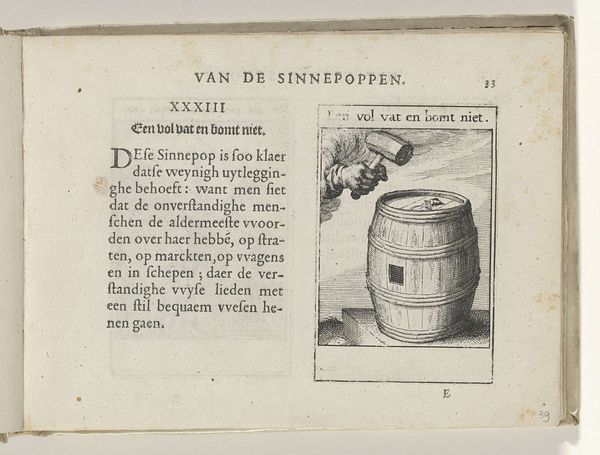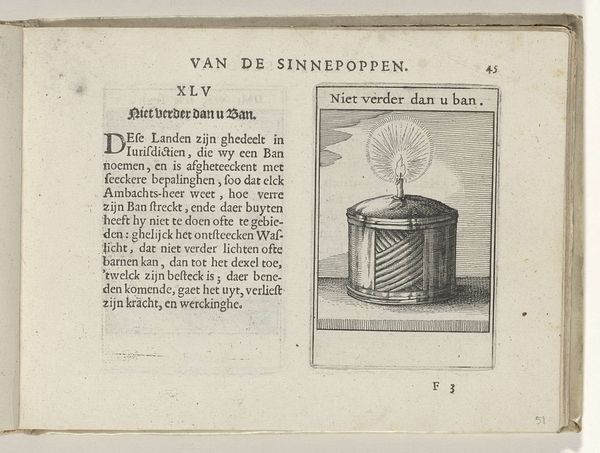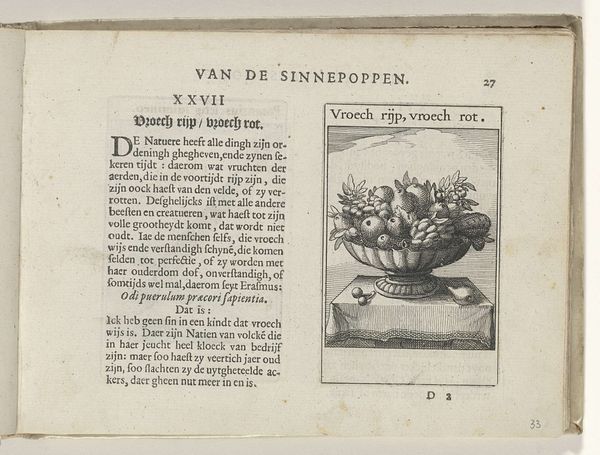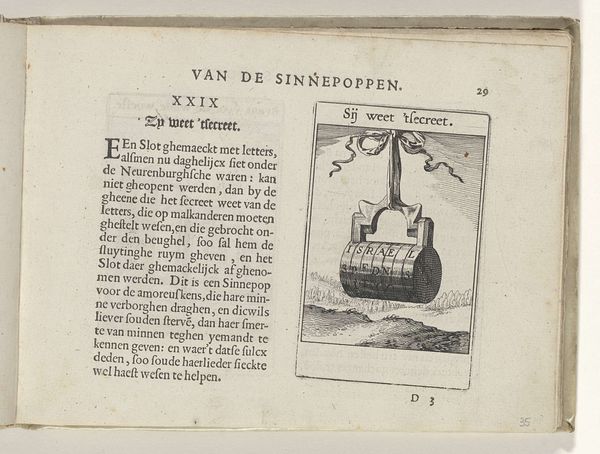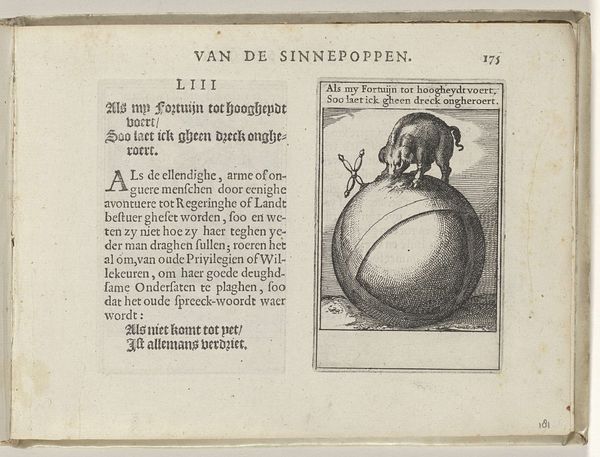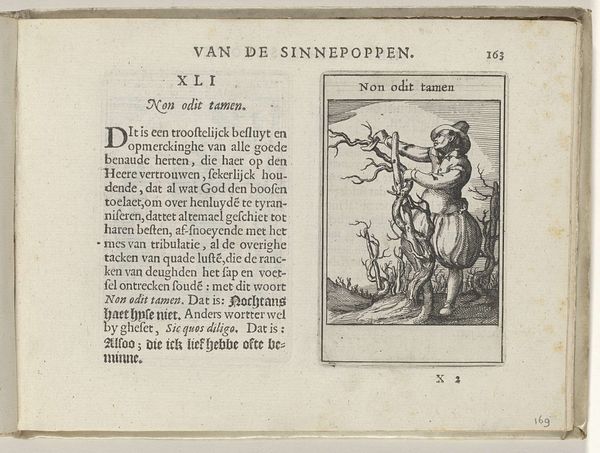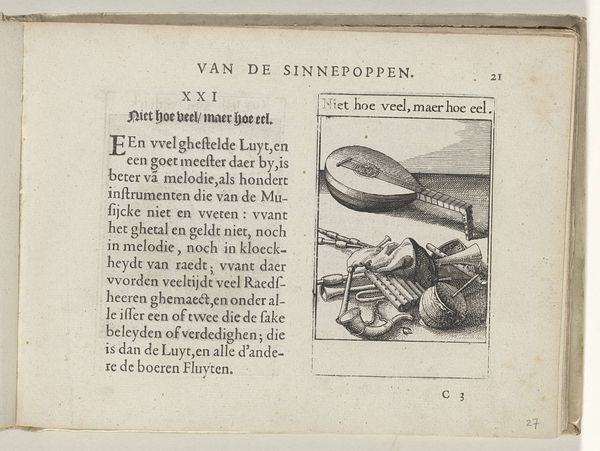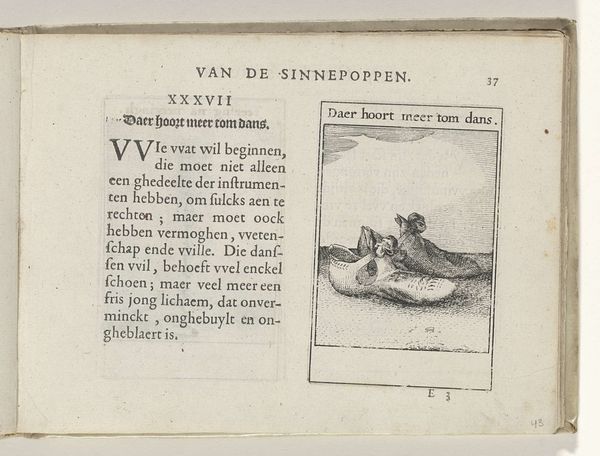
print, engraving
#
dutch-golden-age
# print
#
genre-painting
#
engraving
Dimensions: height 137 mm, width 188 mm, height 95 mm, width 60 mm
Copyright: Rijks Museum: Open Domain
Editor: So, here we have "IV Wrijft u niet", created in 1614 by Roemer Visscher. It’s a print – an engraving, actually – held at the Rijksmuseum. My immediate impression is the striking simplicity. Three pots are sitting, seemingly inert. How should we read this scene, though? What catches your eye about the piece? Curator: The composition’s geometry intrigues me. Note the arrangement of the three cauldrons – they form a pyramidal structure, directing the gaze upward and outward. This simple arrangement achieves balance and compositional unity. But consider also the graphic quality, the strong contrast of dark lines against the light background. This contrast creates a visual dynamism, preventing the composition from becoming static despite its apparent simplicity. Notice the artist's use of line: are they uniform, or do you detect variations in thickness and pressure that contribute to a sense of volume and texture? Editor: I see what you mean, the varying line weights do give the pots form. It’s clever how the etching creates a sense of light and shadow without shading, only by implication through these varying densities of line. The texture almost fools the eye. But these are still only pots, so isn't it just descriptive? Curator: It is much more than descriptive. Consider that a formalist lens encourages us to isolate the purely visual. Think how that stark contrast, in combination with a compositional arrangement predicated upon implying the subject matter is on view or about to become visible—as if waiting—could represent a philosophical state, or even a physical metaphor for an intellectual struggle with an issue of clarity, especially in relation to light or darkness. Editor: Interesting! The simple act of observing the materials, shapes, and lines opens to symbolic meaning! I’ll look more closely at artworks going forward for their inherent structure before rushing to analyze what they mean or show. Curator: Indeed, the form itself, meticulously considered and constructed, dictates meaning. Focusing on those relationships transforms our understanding from mere viewing into comprehension.
Comments
No comments
Be the first to comment and join the conversation on the ultimate creative platform.
